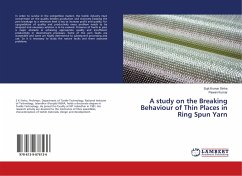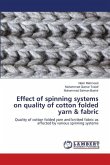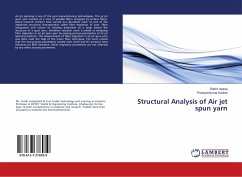In industry, different practices are followed for reducing the twist liveliness. Steaming, the most widely used practice helps to reduce twist liveliness through dissipation of elastic strain apart from maintaining the appropriate moisture level in yarn. This book, "Empirical modelling of snarling behaviour in staple yarn" focused on modelling of snarling behaviour of grey and steamed yarn. This helped in developing the scientific understanding of various stages of snarl formation and snarl removal. Equations are formed, that helped in getting the relationship between count, twist multiplier, tension and length of yarn. Stress at which snarl formation starts i.e. critical stress was found to be different for different yarns. The derived equation involving critical stress, count and twist multiplier will be able to predict the tension level that is to be maintained to prevent snarl formation. Similarly, tension required to open the snarl is also studied and based on that, an equation is formed, which can predict the amount of tension required to remove the snarl present in the yarn.
Bitte wählen Sie Ihr Anliegen aus.
Rechnungen
Retourenschein anfordern
Bestellstatus
Storno








